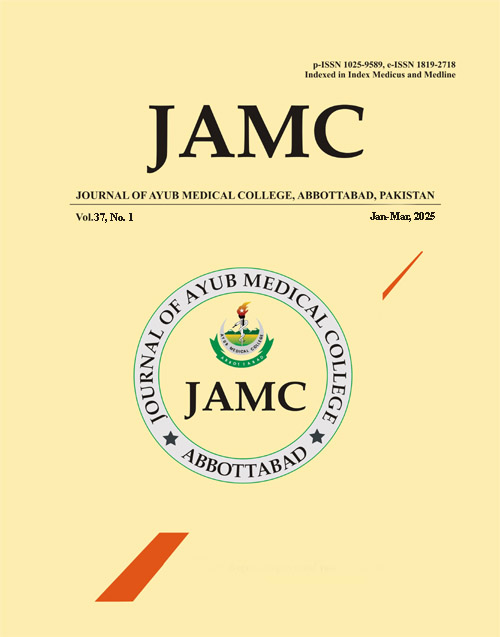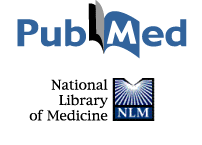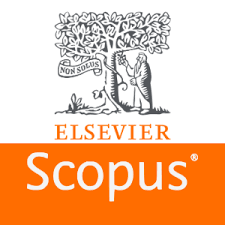A COMPARATIVE STUDY OF DIGITAL LATERAL CEPHALOGRAM AND VIRTUAL CONE-BEAM COMPUTED ASSISTED CEPHALOGRAM IN CEPHALOMETRIC ANALYSIS
DOI:
https://doi.org/10.55519/JAMC-02-13721Abstract
Background: The Advent of innovative technologies like Cone Beam Computed Tomography (CBCT) scans presents itself as an alternative to traditional lateral cephalometric radiography. However, it is imperative to validate images generated using this technology for meaningful comparisons. Moreover emphasizing the necessity to justify the amount of radiation exposure is crucial. Through this investigation, we seek to determine the comparability of angular and linear measurements derived from Digital lateral cephalometry and CBCT derived lateral cephalograms.
Methods: 40 lateral cephalometric radiographs and 40 virtual cephalograms from cone-beam computed tomography were analyzed, involving forty patients from the Orthodontic Department at Fauji Foundation Hospital Islamabad. After the prior calibration, two sets of measurements within a fifteen-day interval using Down's analysis and WebCeph software. The discrepancies between these measurements were assessed to determine their significance
Results: There was strong correlation between the measurements of 2D and 3D cephalometric angles among FA, AOC, MPA, YA, COP, IIA, IOPA, IMPA and UIAP Linear . The most notable variance was observed in the Cant of occlusal plane (COP) reaching a statistical significance (P < 0.05). Conversely, Y-axis exhibited the least variance.
Conclusions: The absence of statistically significant differences suggests that, in our study, choice of radiograph used for analysis had minimal impact on the cephalometric measurements. These findings highlight the reliability and comparability between CBCAC and DLC.
References
Calle-Morocho J, Morales-Vadillo R, Guevara-Canales J & Alva-Cuneo C. A comparative study of digital lateral radiography and virtual cone-beam computed assisted cephalogram in cephalometric measurements. J Oral Res 2018;7(8):372-381
Yang S, Song ES, Lee ES, Kang SR, Yi WJ, Lee SP. Ceph-Net: automatic detection of cephalometric landmarks on scanned lateral cephalograms from children and adolescents using an attention-based stacked regression network. BMC Oral Health. 2023 Oct 27;23(1):803. doi: 10.1186/s12903-023-03452-7.
Thet PH, Kaboosaya B. Reproducibility of Computerized Cephalometric Analysis Software Compared with Conventional Manual Tracing for Analyzing Skeletal Stability After Orthognathic Surgery. J Maxillofac Oral Surg. 2023 Dec;22(4):833-840. doi: 10.1007/s12663-023-02071-7.
Tolentino ES, Yamashita FC, de Albuquerque S, Walewski LA, Iwaki LCV, Takeshita WM, Silva MC. Reliability and accuracy of linear measurements in cone-beam computed tomography using different software programs and voxel sizes. J Conserv Dent. 2018 Nov-Dec;21(6):607-612. doi: 10.4103/JCD.JCD_314_18.
Kim MJ, Liu Y, Oh SH, Ahn HW, Kim SH, Nelson G. Automatic Cephalometric Landmark Identification System Based on the Multi-Stage Convolutional Neural Networks with CBCT Combination Images. Sensors (Basel). 2021 Jan 12;21(2):505. doi: 10.3390/s21020505. PMID: 33445758;
Li C, Teixeira H, Tanna N, Zheng Z, Chen SHY, Zou M, Chung CH. The Reliability of Two- and Three-Dimensional Cephalometric Measurements: A CBCT Study. Diagnostics (Basel). 2021 Dec 7;11(12):2292. doi: 10.3390/diagnostics11122292. PMID: 34943528; PMCID: PMC8700671.
Chung EJ, Yang BE, Park IY, Yi S, On SW, Kim YH, Kang SH, Byun SH. Effectiveness of cone-beam computed tomography-generated cephalograms using artificial intelligence cephalometric analysis. Sci Rep. 2022 Nov 29;12(1):20585. doi: 10.1038/s41598-022-25215-0. PMID: 36446924; PMCID: PMC9708822.
Prince STT, Srinivasan D, Duraisamy S, Kannan R, Rajaram K. Reproducibility of linear and angular cephalometric measurements obtained by an artificial-intelligence assisted software (WebCeph) in comparison with digital software (AutoCEPH) and manual tracing method. Dental Press J Orthod. 2023 Apr 3;28(1):e2321214. doi: 10.1590/2177-6709.28.1.e2321214.oar. PMID: 37018830; PMCID: PMC10069747.
Ä°zgi E, Pekiner FN. Comparative Evaluation of Conventional and OnyxCeph„¢ Dental Software Measurements on Cephalometric Radiography. Turk J Orthod. 2019 Jun;32(2):87-95. doi: 10.5152/TurkJOrthod.2019.18038. Epub 2019 Jun 1. PMID: 31294411; PMCID: PMC6605879.
Mahto RK, Kafle D, Giri A, Luintel S, Karki A. Evaluation of fully automated cephalometric measurements obtained from web-based artificial intelligence driven platform. BMC Oral Health. 2022 Apr 19;22(1):132. doi: 10.1186/s12903-022-02170-w. PMID: 35440037; PMCID: PMC9020017.
Ho CT, Lin HH, Liou EJ, et al. Three-dimensional surgical simulation improves the planning for correction of facial prognathism and asymmetry: a qualitative and quantitative study. Sci Rep 2017;7: 4042341.
Suomalainen A, Esmaeili EP, Robinson S. Dentomaxillofacial imaging with panoramic views and cone beam CT. Insights Imaging. 2015;6:1-16.
Wang H, Minnema J, Batenburg KJ, Forouzanfar T, Hu FJ, Wu G. Multiclass CBCT Image Segmentation for Orthodontics with Deep Learning. J Dent Res. 2021 Aug;100(9):943-949. doi: 10.1177/00220345211005338. Epub 2021 Mar 30. PMID: 33783247; PMCID: PMC8293763.
Durão AR, Pittayapat P, Rockenbach MI, Olszewski R, Ng S, Ferreira AP, Jacobs R. Validity of 2D lateral cephalometry in orthodontics: a systematic review. Prog Orthod. s2013;14:31.
Navarro Rde L, Oltramari-Navarro PV, Fernandes TM, Oliveira GF, Conti AC, Almeida MR, Almeida RR. Comparison of manual, digital and lateral CBCT cephalometric analyses. J Appl Oral Sci. 2013 Mar-Apr;21(2):167-76. doi: 10.1590/1678-7757201302326. PMID: 23739848; PMCID: PMC3881882.
Ludlow JB, Gubler M, Cevidanes L, Mol A. Precision of cephalometric landmark identification: cone-beam computed tomography vs conventional cephalometric views. Am J Orthod Dentofacial Orthop. 2009 Sep;136(3):312.e1-10; discussion 312-3. doi: 10.1016/j.ajodo.2008.12.018. PMID: 19732656; PMCID: PMC2753840.
Fontes RMVQ, de Carvalho Nunes TA, Dos Santos Machado RF, Ribeiro PML, Marques JAM, Corte-Real A. Reproducibility of human landmark identification in morphological mandible prototypes: major parameters for a 3D CBCT approach. Forensic Sci Res. 2023 Sep 13;8(3):211-218. doi: 10.1093/fsr/owad029. PMID: 38221974; PMCID: PMC10785591.
Wen J, Liu S, Ye X, Xie X, Li J, Li H, Mei L. Comparative study of cephalometric measurements using 3 imaging modalities. J Am Dent Assoc. 2017;148(12):913-21.
Jodeh DS, Kuykendall LV, Ford JM, Ruso S, Decker SJ, Rottgers SA. Adding Depth to Cephalometric Analysis: Comparing Two- and Three-Dimensional Angular Cephalometric Measurements. J Craniofac Surg. 2019 Jul;30(5):1568-1571. doi: 10.1097/SCS.0000000000005555. PMID: 31299770.
Cattaneo PM, Bloch CB, Calmar D, Hjortshoj M, Melsen B. Comparison between conventional and cone-beam computed tomography-generated cephalograms. Am J Orthod Dentofacial Orthop. 2008;134:798-802.
Downloads
Published
How to Cite
Issue
Section
License
Copyright (c) 2025 Dr.Momna Qadeer, Prof. Dr. Rozina Nazir, Dr. Ruhamaa Arshad

This work is licensed under a Creative Commons Attribution-NoDerivatives 4.0 International License.
Journal of Ayub Medical College, Abbottabad is an OPEN ACCESS JOURNAL which means that all content is FREELY available without charge to all users whether registered with the journal or not. The work published by J Ayub Med Coll Abbottabad is licensed and distributed under the creative commons License CC BY ND Attribution-NoDerivs. Material printed in this journal is OPEN to access, and are FREE for use in academic and research work with proper citation. J Ayub Med Coll Abbottabad accepts only original material for publication with the understanding that except for abstracts, no part of the data has been published or will be submitted for publication elsewhere before appearing in J Ayub Med Coll Abbottabad. The Editorial Board of J Ayub Med Coll Abbottabad makes every effort to ensure the accuracy and authenticity of material printed in J Ayub Med Coll Abbottabad. However, conclusions and statements expressed are views of the authors and do not reflect the opinion/policy of J Ayub Med Coll Abbottabad or the Editorial Board.
USERS are allowed to read, download, copy, distribute, print, search, or link to the full texts of the articles, or use them for any other lawful purpose, without asking prior permission from the publisher or the author. This is in accordance with the BOAI definition of open access.
AUTHORS retain the rights of free downloading/unlimited e-print of full text and sharing/disseminating the article without any restriction, by any means including twitter, scholarly collaboration networks such as ResearchGate, Academia.eu, and social media sites such as Twitter, LinkedIn, Google Scholar and any other professional or academic networking site.










